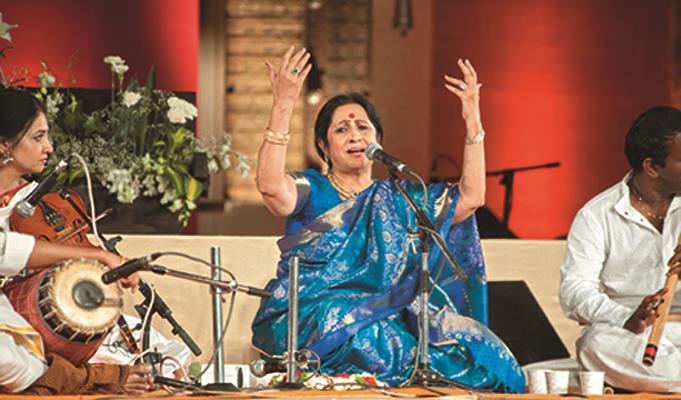For thousands of spiritual seekers, particularly in South India, it’s become a no-brainer. Whatever else
This Mahashivaratri night is something of a wild party. There is heart-pumping music, powerful guided meditations, everyone dances like this could be their last night on earth and no one sleeps a wink. Carnatic artist Aruna Sairam came to sing this year, Sadh-guru narrated stories from Shiva-lore interspersed by dance performances by Anita Ratnam and, in the small hours, when the eight-lakh-and-change people at the venue may have understandably drooped in their seats, the Raghu Dixit Project woke everyone up rather nicely. The events were also going out live via television to millions of people wishful of maintaining the tradition of keeping awake this moonless night.
But I was glad to actually be here. And I wasn’t here only for a day. Every year, the week leading up to Mahashivaratri is dedicated to Yaksha, a festival of classical music and dance. This year’s line-up included the violinist T.N. Krishnan and vocalists Ulhas Kashalkar and T.M. Krishna. The performances typically take place in the Linga Bhairavi courtyard. This is a newly minted deity — a feminine power who is both fierce and kind. The walls that form the backdrop are lit with hundreds of lamps and concerts begin at dusk. The seven recitals were all excellent but Odissi dancer Madhavi Mudgal was a revelation to me. Deft footwork, skilled abhinaya and the capacity for stillness that marks a master. On the final day, T.M. Krishna held sway. Culling from the kritis of Muthuswamy Dikshitar, Bharatiyar and other Bhakti poets, he sang a fine blend of technique and devotion.
To pump up the spectacle quotient, every day of Yaksha has a maha arati. The goddess is taken out in procession around the complex, where the arati is offered to the Dhyanalinga. The pageant involves trumpets, cymbals and long flaming torches… Attendants clear the way with aggressive, sweeping gestures as the Devi is brought into position. Then, lithe brahmacharis, holding large vessels of leaping fire, offer their dance of passionate submission. Fabulous!
Then, the week-long party was over. At 6am after Mahashivaratri, lakhs of people melted magically away. Bleary-eyed, I walked back from the grounds. The Dhyanalinga, which I expected to be besieged by long queues, was empty. I went in and sat in one of the cubicles. Lack of sleep and, of course, the Dhyanalinga did their thing. I was soon fathoms deep, elsewhere.
Just Back
Mahashivaratri
Velliangiri
Leave a Reply
You must be logged in to post a comment.


